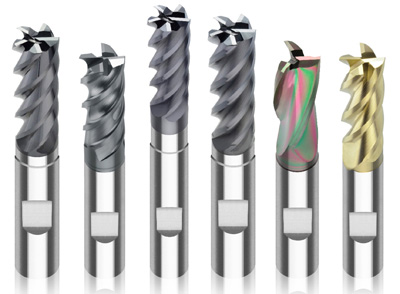TSC Milling Tools
TSC Milling Tools
InovaTools offers TSC tools that have been optimally adapted in terms of substrate, geometry and chip clearance for various materials, such as special alloys, hardened steel, tempering steel, INOX, general construction steel, aluminum and plastic.

Trochoidal speed cutting (TSC) is the method of the hour, particularly when it comes to profitably manufacturing large, top-quality cross-sections using low cutting forces at high speeds, even under critical usage conditions. Tool manufacturer InovaTools provides the metalworking industry with customized tools to do exactly this. In combination with the innovative machining cycle, machining time can be reduced by up to 60 percent compared with conventional full-slot milling, depending on the application.
Static and dynamic trochoidal speed cutting (TSC) is a combination of circular and linear slot milling with higher feed rates, large cross-sections and high engagement depths. Using small tool diameters, the special trochoidal machining path allows for a much larger cutting diameter than that of conventional full-slot milling. In addition, the entire length of the cutting edge on TSC tools is utilized evenly. The bottom line is that the user gains significant benefits in terms of productivity, even when machining hard-to-cut materials.
Douglas Kline, Managing Director Inovatools USA LLC: "The computing power of control units in modern machining centers is continuously improving and increasing in speed. In combination with optimally adapted tools from InovaTools, TSC is therefore now completely reliable and is setting new standards, particularly in slot milling. Thanks to our special TSC tools, InovaTools customers are able to get even more out of their machines, including less powerful ones."
The primary aim of TSC milling is to reduce the cutting force and therefore the resulting buildup of heat in the respective application – and InovaTools achieves this thanks to a smaller cutting arc angle. After all, the smaller the angle, the shorter the chips and the better the chip-breaking. Since the end mill does not completely fill the slot, not only are all chips quickly removed from the contact zone but the heat from cutting is also transported away from the area. As a result, the TSC end mills from InovaTools can be operated with high cutting depths, speeds and feeds as well as low cutting forces. To reduce machining time even more, a greater number of teeth are used, whereby the feed rate can be further increased. Despite the extreme cutting parameters, there is less wear on the cutting edge than with conventional milling methods. The TSC tools can be optimally utilized and are a great deal more durable.
InovaTools offers TSC tools that have been optimally adapted in terms of substrate, geometry and chip clearance for various materials, such as special alloys, hardened steel, tempering steel, INOX, general construction steel, aluminum and plastic. Examples include the five-edge TSC TITAN end mill (diameter: 6–20mm) for machining special alloys such as titanium or Inconel. The three- to four-edge HARDMAX end mill features a particularly robust design. With diameters ranging from 2.5 to 20mm, it is particularly suitable for TSC milling hardened steel (55–60 HRC). The SC end mill TSC INOX is available in diameters of 6 to 20mm.
TSC allows for significant performance increases in aluminum cutting, too. The two- to four-edge lapped end mill TSC ALU, which is available in diameters ranging from 4 to 25mm, is optimally designed to meet these special cutting requirements. For plastics, InovaTools offers lapped SC end mills (diameter: 3–25mm).
In addition to personalized advice on technical cutting parameters, InovaTools also provides the cutting database INOCUT online (www.schnittdaten.eu) for PCs, tablets, smartphones, etc. The database features its own "TSC circular milling" calculation tool for a wide range of applications. For example, the user enters the slot width or drill hole diameter and is recommended an engagement width calculated using a predefined cutting arc angle.
Kline said: "It is important that the engagement depth for the application is at least 1xD and that the chosen tool radius is smaller than the smallest radius on the component in order to optimize cutting data and process reliability. Under ideal conditions, this can reduce machining time by up to 60 percent."





